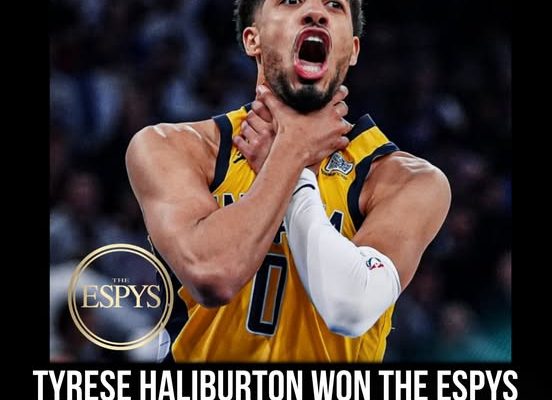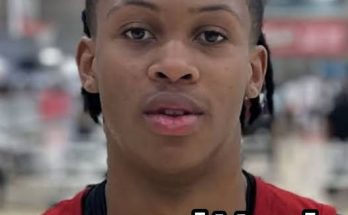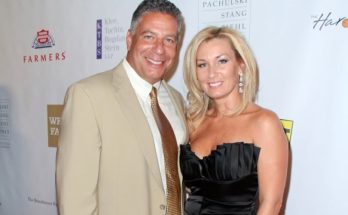Tyrese Haliburton’s rise as the NBA’s newest face of intensity and competitive fire reached a new milestone when he clinched the ESPY Award for Villain of the Year. This accolade, typically reserved for figures whose presence on the court stirs emotions ranging from awe to frustration, marks a defining moment not only for Haliburton but for the Indiana Pacers franchise itself. It signals the emergence of a player who has mastered the art of balancing skill and psychological impact, shifting the narrative around his persona from a rising star to a compelling antagonist in the league’s dramatic storylines. This transformation is more than just a headline; it encapsulates a growing trend in professional sports where charisma, mental toughness, and competitive edge create legends as much as physical ability does.
Tyrese Haliburton’s journey to this unique recognition is layered with impressive basketball prowess and moments that have unsettled opponents and thrilled fans. Drafted by the Sacramento Kings in 2020 and later traded to the Pacers, Haliburton quickly distinguished himself with a playing style characterized by smart decision-making, quickness, and a deadly three-point shot. His court vision and passing ability put him in the conversation as one of the league’s most promising young guards. However, what truly set him apart in the eyes of the ESPY voters was his knack for stepping up in clutch moments, often tipping the balance of intense games with timely plays that frustrated rival teams and electrified his own.
The Villain of the Year award is fascinating because it blurs the lines between traditional “hero” status and the more complex role of a player who thrives on competition and provocation. Haliburton embodies this duality. On the surface, his demeanor might seem calm and composed, but on the court, he reveals a relentless drive that can unsettle even the most seasoned opponents. His confidence sometimes manifests in trash talk, daring shots, or orchestrated plays that seem to taunt defenses. This psychological warfare is a staple of many great athletes but Haliburton’s execution is uniquely effective, earning him respect and a reputation as an adversary who is as mentally tough as he is physically gifted.
For the Indiana Pacers, Haliburton’s recognition is a significant boost in visibility and identity. The Pacers have been in a rebuilding phase, trying to recapture their prominence from past decades. Having a player who not only performs at a high level but also becomes a cultural figure in the league helps the team rebrand itself in a competitive Eastern Conference. Haliburton’s blend of skill and swagger injects energy into the Pacers’ roster, making them a team to watch and a tougher opponent to prepare for. His ability to impact games on multiple levels—scoring, playmaking, and psychological edge—adds a dynamic element that coaches and players in the league must reckon with.
The Villain of the Year title also reflects the changing nature of sports fandom and media narratives. Today’s audiences crave complex characters, and players like Haliburton fulfill that desire by mixing sports excellence with a magnetic presence. His antics, whether it’s a smirk after a buzzer-beater or a pointed gesture after a steal, become viral moments that fuel debates and engagement across social media platforms. This attention helps build his personal brand, while simultaneously putting a spotlight on the Pacers, expanding their fan base and influence beyond traditional basketball circles. It’s a win-win scenario where entertainment value and competitive spirit merge to create a compelling story.
Haliburton’s ability to remain effective while playing the villain role is also a testament to his professionalism. Unlike stereotypical “bad guys” who may sacrifice team goals for personal bravado, Haliburton’s approach is rooted in team success. His villainy is strategic, designed to disrupt opponents’ rhythm without undermining his own squad’s cohesion. This balance is critical in modern basketball, where mental toughness must coincide with teamwork and respect for the game’s fundamentals. Coaches and teammates have praised his leadership and maturity, highlighting that his on-court intensity never crosses into recklessness. This measured aggression allows him to sustain his performance across grueling seasons and high-pressure moments.
The wider NBA community has taken notice of Haliburton’s impact. Opponents speak about the challenge of guarding him not just because of his physical skills but due to the mental games he plays. Analysts highlight his clutch performances and his ability to tilt momentum during crucial stretches. Fans, meanwhile, are divided—some admire his audacity and skill, while others find themselves rooting against him, which is exactly the effect of a well-played villain. This polarizing presence adds to the intrigue of the league’s narrative, enhancing rivalries and fueling storylines that extend beyond the box score.
Haliburton’s win also raises interesting questions about the evolving definitions of sportsmanship and competition. In an era where player behavior is scrutinized intensely, celebrating a “villain” acknowledges that fierce competitiveness and psychological tactics are integral to professional sports. It challenges the simplistic good-versus-bad dichotomy, suggesting that players can be both respected athletes and provoking figures who elevate the intensity of the game. This complexity reflects a more mature understanding of the sport’s drama and human element, where conflict and tension are part of what makes basketball compelling to millions.
Looking ahead, the challenge for Haliburton will be to maintain this balance. The expectations that come with the Villain of the Year title are high—fans and media will watch closely to see if he can continue to perform at an elite level while keeping his psychological edge sharp. For the Pacers, supporting Haliburton’s growth means harnessing his competitive fire to fuel team success and using his persona to attract attention and excitement around the franchise. If managed well, this could mark the beginning of a new era for Indiana basketball, driven by a player who embodies the complex blend of skill, charisma, and intensity that defines modern professional sports.
In summary, Tyrese Haliburton’s capture of the ESPY Villain of the Year award is more than an individual honor—it’s a cultural moment for the NBA and the Indiana Pacers. It spotlights a player who has transcended traditional roles to become a symbol of fierce competition and engaging storytelling on the court. His blend of skill, mental toughness, and captivating presence challenges opponents and excites fans, redefining what it means to be a “villain” in sports today. As Haliburton continues to grow and the Pacers build around him, this award might well be remembered as a pivotal point in both his career and the franchise’s resurgence. The Villain of the Year has arrived, and the NBA landscape is richer and more thrilling for it.



